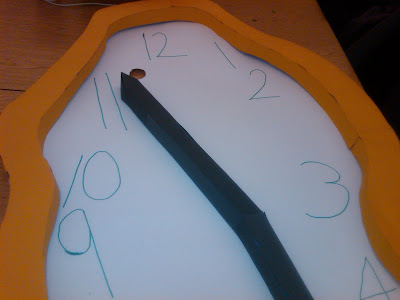Artist: Kim MusserKim Musser, a Master’s candidate in fine arts, presented her work as part of her thesis show this week.
Although not the greatest lecturer or public speaker, Musser is a talented artist. Musser’s work stands out because of her great detail in her drawings and precise and meticulous technique in her paintings.
Each line in Musser’s drawings is steady and seems perfect in terms of interaction with other shapes, thickness and size. The shapes and lines are small and work together to create a larger, intricate piece — in details that are quite amazing.
In her paintings, “the presence of hand” is absent — in the sense that the works show no surface texture or brush strokes. It’s as if the paintings are practically digitally printed, rather than handmade.

In response to Musser’s color and shape choices, I think they definitely reflect the pop culture of the seventies as she pointed out in her lecture. Although her paintings look abstract on the surface, understanding the artist’s influences definitely add another layer allows the paintings to be more representative.
Musser pointed this out in her lecture by showing alternating slides of her favorite childhood movies next to her work. The fact that Musser showed her work next to her influences allowed viewers to better understand the artwork in a way that may not have been grasped without those comparisons.
Although this explanation was valuable, Musser focused too much on what movies and television shows she liked as a child rather than on her artwork in her presentation. She hardly talked about her work, and only really discussed her technique when asked during the Q & A portion of the lecture. She was obviously painfully nervous, which made her talk come off as unprofessional.
Luckily, her charming personality and admission that she admired her favorite artist because they shared a dislike for discussing their works, saved the lecture part of her show.
Questions for the artist: 1. Why did you decide to focus on seventies’ pop culture rather than political messages, realism or other representations in your work?
2. Your work is traditional in the sense that your mediums are paper and canvas. How do you think your work is able to stand out despite this – in an era of hundreds of new mediums, especially in the realm of new digital technology?
*Photo credit: unr.edu








































